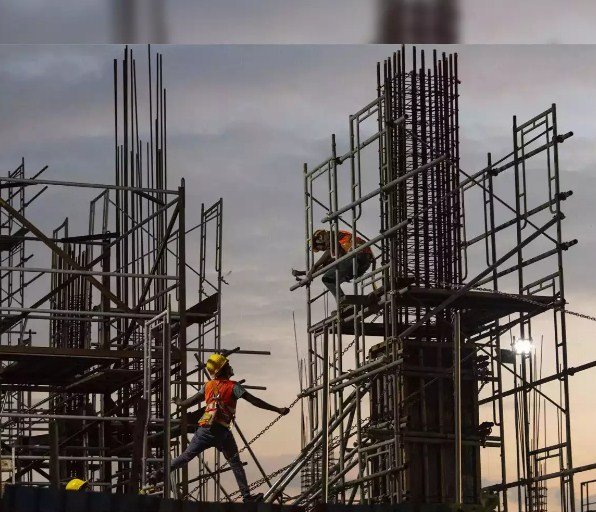The cost of construction in Georgia has increased by 12.5% in 2023, according to the latest report by the National Statistics Office of Georgia (Geostat). This is the highest annual increase since 2008, when the country faced a war with Russia and a global financial crisis. The main factors behind this surge are the rising prices of raw materials, labor, and fuel, as well as the impact of the Covid-19 pandemic and the geopolitical tensions in the region.
Raw Materials: A Key Driver of Construction Cost
One of the main drivers of the construction cost index (CCI) is the cost of raw materials, which accounts for about 60% of the total index. According to Geostat, the cost of raw materials increased by 17.4% in 2023, compared to 2022. This is mainly due to the global supply chain disruptions caused by the Covid-19 pandemic, which affected the availability and delivery of essential materials such as steel, cement, wood, and plastic.
The pandemic also triggered a surge in demand for construction materials, as many countries launched infrastructure projects to stimulate their economies and cope with the social and environmental challenges posed by the health crisis. For instance, the European Union announced a €750 billion recovery fund, of which €37 billion is allocated for the renovation of buildings and €10 billion for the development of renewable energy sources.

Another factor that contributed to the increase in raw material prices is the inflationary pressure in the global market, which resulted from the expansionary monetary and fiscal policies adopted by many central banks and governments to mitigate the economic impact of the pandemic. According to the International Monetary Fund (IMF), the global inflation rate is expected to reach 5.9% in 2023, the highest level since 2008.
Labor and Fuel: Other Contributors to Construction Cost
Besides raw materials, labor and fuel are also significant components of the construction cost index, accounting for about 20% and 10% of the total index, respectively. According to Geostat, the cost of labor increased by 8.9% in 2023, compared to 2022, while the cost of fuel increased by 15.6% in the same period.
The cost of labor reflects the wages and salaries of the workers involved in the construction sector, as well as the social contributions paid by the employers. The increase in labor cost is mainly due to the shortage of skilled workers in the sector, which resulted from the migration of many workers to other countries or sectors in search of better opportunities. The Covid-19 pandemic also affected the availability and mobility of workers, as many of them had to quarantine or isolate due to the infection or exposure to the virus.
The cost of fuel reflects the prices of diesel, gasoline, and electricity, which are used to power the machinery and equipment used in the construction sector. The increase in fuel cost is mainly due to the rise in oil prices, which reached $80 per barrel in October 2023, the highest level since 2014. The oil prices are influenced by the supply and demand dynamics in the global market, as well as the geopolitical factors in the major oil-producing regions, such as the Middle East and North Africa.
The Impact of Construction Cost on the Economy and Society
The increase in construction cost has a significant impact on the economy and society of Georgia, as it affects the affordability and accessibility of housing, infrastructure, and public services. According to the World Bank, Georgia ranks 128th out of 190 countries in the ease of getting electricity, 94th in the ease of registering property, and 88th in the ease of dealing with construction permits. These indicators reflect the challenges and barriers faced by the private sector and the citizens in accessing and developing the basic amenities and facilities that are essential for the well-being and prosperity of the population.
The high construction cost also affects the competitiveness and attractiveness of the country as a destination for foreign direct investment (FDI), which is a key source of capital, technology, and employment for the economy. According to the National Bank of Georgia, the FDI inflows to Georgia decreased by 18.4% in 2023, compared to 2022, reaching $1.2 billion. The main sectors that attracted FDI were energy, transport, and communication, which are also the sectors that require high investment in construction.
The government of Georgia has taken some measures to address the issue of high construction cost and to support the development of the sector. For instance, it has reduced the import tariffs on some construction materials, such as steel and cement, to lower the cost and increase the supply of these materials. It has also launched several programs and initiatives to improve the quality and efficiency of the construction sector, such as the Green Building Code, the Construction Sector Development Strategy, and the Construction Sector Reform Action Plan.
However, more efforts and cooperation are needed from the public and private sectors, as well as the international partners, to overcome the challenges and seize the opportunities in the construction sector. The sector has a huge potential to contribute to the economic growth, social development, and environmental sustainability of the country, as well as to the regional integration and cooperation in the South Caucasus and beyond.
